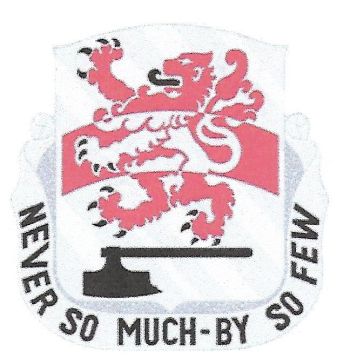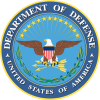458th Engineer Battalion, US Army: Difference between revisions
Knorrepoes (talk | contribs) m (Text replacement - "{{us-images}}" to "{{us}} {{media}}") |
|||
| Line 20: | Line 20: | ||
The Coat of Arms and Distinctive Unit Insignia, was both approved on 16 September 1954. | The Coat of Arms and Distinctive Unit Insignia, was both approved on 16 September 1954. | ||
[[Literature]]: Images | [[Literature]]: Images and Information from The Institute of Heraldry, US Army{{us}} | ||
{{media}} | {{media}} | ||
Revision as of 17:59, 11 February 2024
458TH ENGINEER BATTALION, US ARMY
 (Coat of Arms) |
(Distinctive Unit Insignia) |
Official blazon
Shield: Argent, a lion rampant double queued Gules, armed and langued Sable, and a fess archy counterchanged, in base a battle-axe fesswise of the last.
Crest: That for the regiments and separate battalions of the Army Reserve: On a wreath of the colors Argent and Gules, the Lexington Minute Man Proper. The statue of the Minute Man, Captain John Parker (H.H. Kitson, sculptor), stands on the common in Lexington, Massachusetts.
Motto: NEVER SO MUCH – BY SO FEW.
Distinctive Unit Insignia. Description: A Silver color metal and enamel device 1 1/8 inches (2.86 cm) in height overall consisting of a shield blazoned: Argent, a lion rampant double queued Gules, armed and langued Sable, and a fess archy counterchanged, in base a battle-axe fesswise of the last. Attached below and to the sides of the shield a Silver scroll inscribed “NEVER SO MUCH – BY SO FEW” in Black letters.
Origin/meaning
The shield is in the colors of the Corps of Engineers. The lion, taken from the arms of St. Vith (Belgium) where the German-Ardennes offensive was stopped, symbolizes the Ardennes-Alsace campaign. The fess archy represents the Ludendorff Bridge crossing the Rhine at Remagen. The successful crossing of the bridge by the American forces was of the greatest importance in the invasion of Germany and was the initial step in the Rhineland campaign. The battle-axe, a favorite Teutonic weapon and heraldic charge throughout the medieval period, represents the organization’s Central Europe campaign.
The Coat of Arms and Distinctive Unit Insignia, was both approved on 16 September 1954.
Literature: Images and Information from The Institute of Heraldry, US Army
US heraldry portal
This page is part of the US heraldry portal |
Heraldry of the World |
|
US heraldry:
|
Ecclesiastical Heraldry of the USA:
Military Heraldry: |
Contact and Support
Partners:
Your logo here ?
Contact us
© since 1995, Heraldry of the World, Ralf Hartemink 
Index of the site















